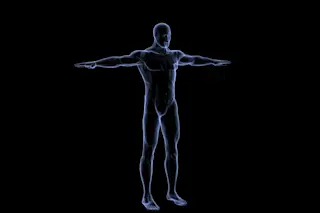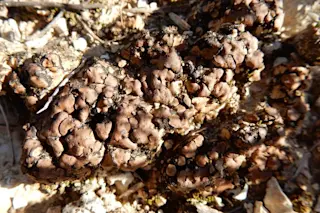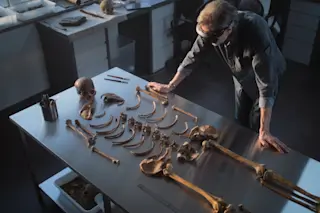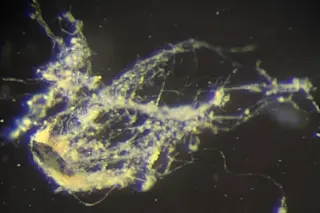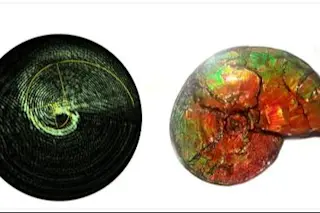When Walt Whitman wrote that he contains “multitudes,” he was probably referring to personal potential. But the 19th-century American poet may just as well have been referring to cells.
Cells are both the smallest biological unit that can survive on their own, as well as the building blocks that construct all living organisms. They contain instructions that can produce over 200 different types — each with their own function. Those instructions contain rules about what kind of cells they can divide into.
Understanding the Basics: What Are Cells?
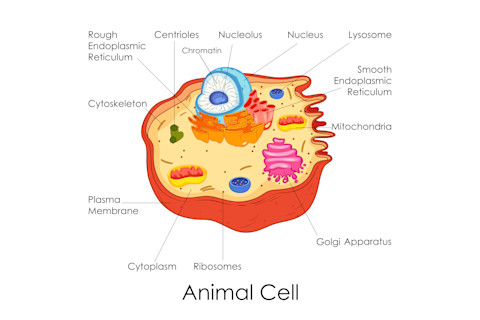
(Credit: Vecton/Shutterstock)
Vecton/Shutterstock
The comparison is apt because the youngest cells in a fertilized egg can, indeed, become multitudes — both in terms of numbers and types. They are often referred to as the building blocks of life.
However, that description may be a bit too simplistic, says Quyen Aoh, Associate Professor of Biology at Gannon University in Erie, Pennsylvania. She prefers to refer to them as robots.
Like robots, all cells contain a membrane — an outer layer that defines the cell and contains its pieces. That layer is porous, allowing nutrients to feed the cell and waste to leave it.
Inside the skin is the cytoplasm, an area that contains parts that keep the robot running. This includes a framework called the cytoskeleton that gives the cell its shape.
The center of the cell contains the nucleus, which acts like the robot’s hard drive. That hard drive holds DNA, the genetic code that tells each cell what to do or become.
Read More: An Atlas of Our Cells
How Many Cells Are in the Human Body?
We all start as a single cell, called a zygote that is created after sperm fertilizes an egg.
The zygote is the first embryonic stem (ES) cell. This cell is considered “totipotent”—meaning that it can produce any kind of cell. Initially, it gives rise to more of the same. “When the robot is turned on, it figures out that it’d probably have a better chance of survival if it had some buddies, and so makes more of itself,” says Aoh.
Once the embryo grows to about 32 ES cells, they begin to differentiate — or produce more diverse cell types, each with their own specialty. “As the robot population grows, they figure out that they’d survive even better if different groups of robots did different things instead of doing all the same things,” Aoh says.
As the embryo grows, it produces more and more specialized cells — like blood, tissue, and neurons. Once the embryo grows into an adult, it will max out at about 36 trillion cells in men and 28 trillion in women.
Read More: 5 Amazing Things About The Human Body
What Does a Cell Do?
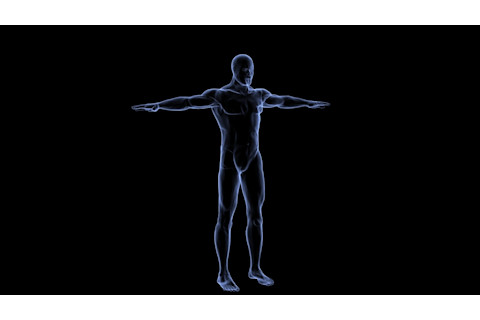
(Credit: Shot4Sell/Shutterstock)
Shot4Sell/Shutterstock
Each cell is alive but depends on both itself and its neighbors for survival. A cell has many of the basic needs of a larger, more complicated living organism.
“It's got to take in nutrients, it's got to build things, it's got to maintain things, it's got to get rid of waste,” says Aoh. “It has to be able to communicate both inside of the cell and outside the cell.”
The cell’s other main job is to make more cells. The question is when, what kind, and how many.
Read More: What Is Regeneration, and Can Other Organs Regenerate Like the Liver?
Exploring the Different Types of Cells in the Body
That’s where the “software” in each cell’s DNA comes into play. The genes — individual pieces of “code” in the hard drive — contain rules about how and what each can become. For instance, once a cell becomes more specialized, it can no longer produce an ES cell.
Also, broad categories of cells cannot change their developmental trajectory. For example, a category of cell that makes blood cells can produce red or white blood cells — but cannot arbitrarily divide into skin cells or neurons. This is true further down the line as well. A red blood cell can’t divide and form white blood cells, for instance.
The differentiation into specific cell types is akin to robots creating a society with a variety of specialized workers. Some stick together to do one job. That’s how a particular tissue is formed.
Others break off and choose a different job. “Soon enough, they’ve created a self-sustaining robot civilization,” Aoh says. “The amazing thing is that they never really had to change the information in their hard drive to do all this. They just altered their programming as their civilization grew to use it more effectively.”
Eventually, this “civilization” will include over 200 specialized cell types. Depending on the type, some “turn over” faster than others — essentially dying off and being replaced by substitutes. The rate of turnover differs by cell type and function. For instance, cells that line your gut are being almost constantly replaced since they battle “invaders” like gut microbes in a hostile environment. Skin cells, too, turn over — but not as quickly as stomach cells, because the level and intensity of “attack” from the environment is neither as frequent nor as severe.
In general, the number of cells in each type grows as we move from childhood to adulthood. There are some counter-intuitive exceptions, though. For instance, we are born with more neurons than we have when we reach adulthood.
“That might sound like a really scary thing,” says Aoh. “But one thing that's really amazing about the neurons in our brain is that our brains figure out more efficient ways to make connections between neurons.”
At some point, cells stop being able to differentiate into other cell types and eventually lose the ability to divide.
Read More: How Does The Brain Think?
When Cells Go Rogue
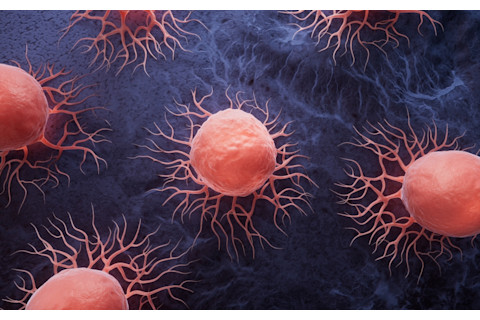
(Credit: Vink Fan/Shutterstok)
Vink Fan/Shutterstok
There are exceptions, though. “Occasionally, you’ve got a malfunctioning robot that decides it’d be better on its own than with its robot buddies,” says Aoh. “But because it’s no longer working with everyone, it becomes a drain on all the other robots as it replicates more of itself. And soon, those defunct robots start causing the good robots to malfunction more often than they’re supposed to. This is cancer.”
Cancer is essentially cell division that is out of control. Cells that SHOULD be done dividing and creating more of their own type instead start creating a different cell type. “Cancer cells somehow or other are able to switch on a program that they should have had turned off,” says Aoh. Instead, their software has essentially become corrupted and the new cell types divide out of control.
Each type of cancer is caused by a different combination of glitches. Those glitches could include damage to the DNA or mutations in genes that are supposed to tell cells to stop dividing, among others. That is why there is no unified cure for cancer. Instead, scientists are finding ways to combat each type, using different weapons and approaches.
Read More: How Many Bones Are in the Human Body, And Other Fascinating Facts About Skeletons
Article Sources
Our writers at Discovermagazine.com use peer-reviewed studies and high-quality sources for our articles, and our editors review for scientific accuracy and editorial standards. Review the sources used below for this article:
Associate Professor of Biology at Gannon University in Erie, Pennsylvania. Quyen Aoh
The Cell: A Molecular Approach. The Origin and Evolution of Cells
Immunology and Microbiology. Cytoskeleton
Before joining Discover Magazine, Paul spent over 20 years as a science journalist, specializing in U.S. life science policy and global scientific career issues. He began his career in newspapers, but switched to scientific magazines. His work has appeared in publications including Science News, Science, Nature, and Scientific American.


